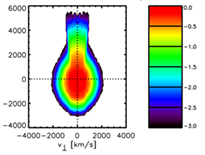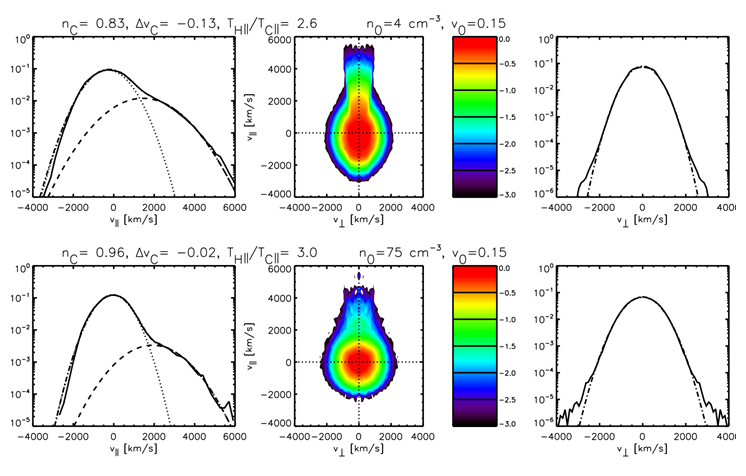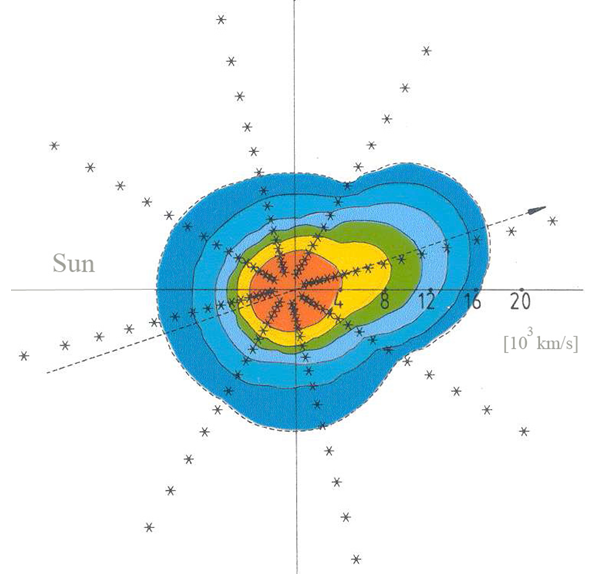The role of binary collisions in the electron properties of the solar wind

Numerical simulations show that the effect of the radial expansion and the binary collisions between electrons play a significant role in shaping the observed velocity distribution function.
The solar wind is commonly modelled as collisionless plasma because of its low density and high temperature. Typical mean free path for a thermal proton and a thermal electron at 1 AU is about 1 AU which justifies this assertion. However there are several observational evidences that seem to indicate that, for the electron, collisions are important in shaping their velocity distribution function. Recently
(Landi et al., 2012), using numerical simulations which take into account Coulomb binary collisions and the radial expansion, we have followed the evolution of the electron distribution function in the solar wind: as can be seen in the figure, an initially isotropic Maxwellian distribution, forms an isotropic core for the low energy part of the distribution where collisions are important, and a collimated radially oriented high energy population which is basically collisionless and shaped by the magnetic moment conservation (here the magnetic field is considered strictly radial).
This structure is qualitatively and quantitatively similar to what observed in the solar wind (below an electron velocity distribution function observed by Helios spacecraft).

